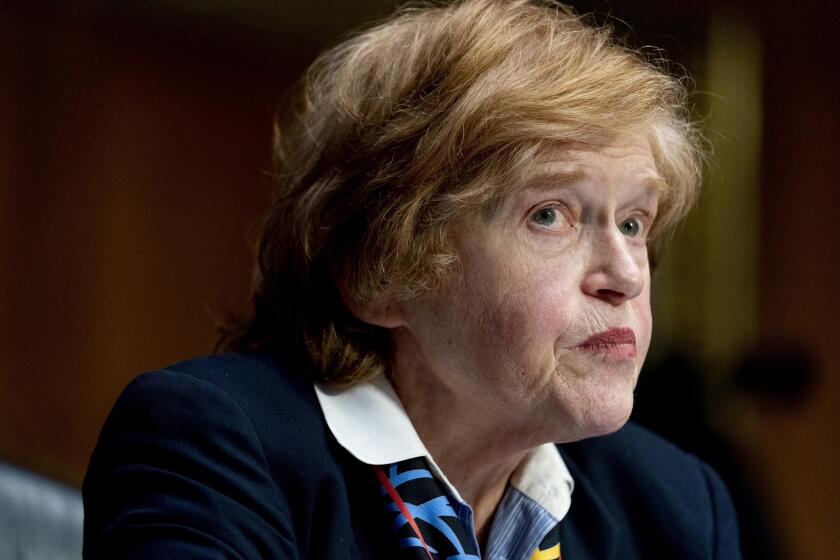Mainline Protestant Ranks Continue Decline of the ‘60s
The bad news is continuing, though in smaller doses, for several U.S. mainline Protestant denominations where the membership decline that began in the mid-1960s continued through 1988, according to the latest “Yearbook of American and Canadian Churches.”
Roman Catholics and more conservative denominations, on the other hand, recorded gains in membership in 1988. Both gains and losses were small, with figures hovering around 1% of the 1987 membership. The loss figures, in many cases, were smaller than those recorded in recent years.
Among the liberal-to-moderate mainline churches, the Evangelical Lutheran Church in America lost 36,696 members for a 5,251,534 total, a slip of .69%. One conservative denomination that bucked the conservative growth trend was the Lutheran Church-Missouri Synod, which lost 10,157 members, a .39% drop to 2,604,278.
Catholics increased to 54,918,949 from 53,496,862, a gain of more than 1.4 million, representing a 2.66% increase from 1987 to 1988.
The 307-page 1990 yearbook, the 58th in a series of reports since 1916, was released earlier this month. Edited by Constant H. Jacquet Jr., the “bible” for church statistics and general information on denominations was prepared by the National Council of Churches Communication Unit. Abingdon Press in Nashville, Tenn., publishes and distributes the yearbook.
Despite more than 10 years of bitter internal wrangling between conservatives and moderates in the nation’s largest Protestant denomination, the Southern Baptist Convention gained 40,227 members in 1988 for a 0.27% increase and a total figure of 14,812,844 members.
Other mainline churches that lost members are:
* The Christian Church (Disciples of Christ), down 13,549, or 1.25%, to 1,073,119;
* The Episcopal Church, down 6,878, or 0.28% to 2,455,422;
* The Presbyterian Church (U.S.A.), down 38,173, or 1.25%, to 2,929,608;
* The United Methodist Church, down 69,430, or 0.76%, to 9,055,145;
* The United Church of Christ, down 17,787, or 1.07%, to 1,644,787.
There were no new figures given for the two major Orthodox churches with members in the United States. The last reported membership figure of the Greek Orthodox Archdiocese of North and South America, which includes Canada and Central America, was 1,950,000 in 1977. The Orthodox Church in America, which includes Canada and has a Russian Orthodox hertiage, reported 1 million members in 1978.
Per capita giving increased by an average 4% for the full, or communicant, members of the nine major U.S. Protestant denominations the yearbook compares each year. But that average figure fell short of the 4.4% rise in the nation’s inflation rate for the year, resulting in a loss of real income for the churches.
The nine U.S. denominations giving data suffered a 0.4% decrease in full membership in 1988.
A study in the yearbook also concluded that “baby boomers” are returning to religion, especially the “younger boomers.”
In “Return of the Baby Boomers to Organized Religion,” Wade Clark Roof of the department of religion at UC Santa Barbara reports that many of the 75 million baby boomers who make up roughly one-third of the U.S. population, are joining churches and synagogues. This “second coming” is a “critical phase” of the postwar generation that has so shaped American culture, Roof reported.
“To the extent there is a dominant direction to changes for the baby boomers in the 1980s,” he wrote, “it is into family formation and parenting, mid-life career concerns and some reassessment of value commitments, the latter often in a more ‘conservative’ direction.”
More to Read
Sign up for Essential California
The most important California stories and recommendations in your inbox every morning.
You may occasionally receive promotional content from the Los Angeles Times.






